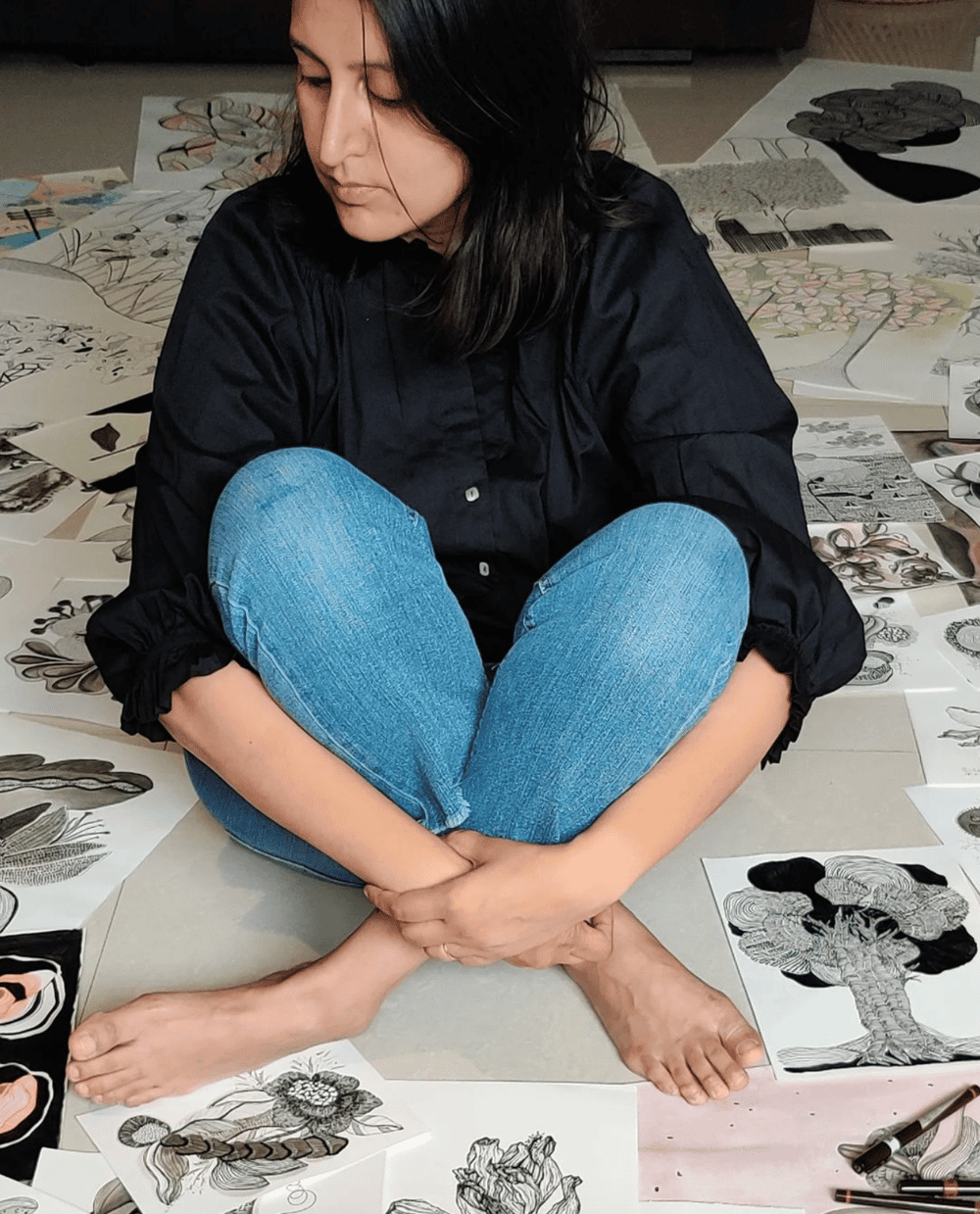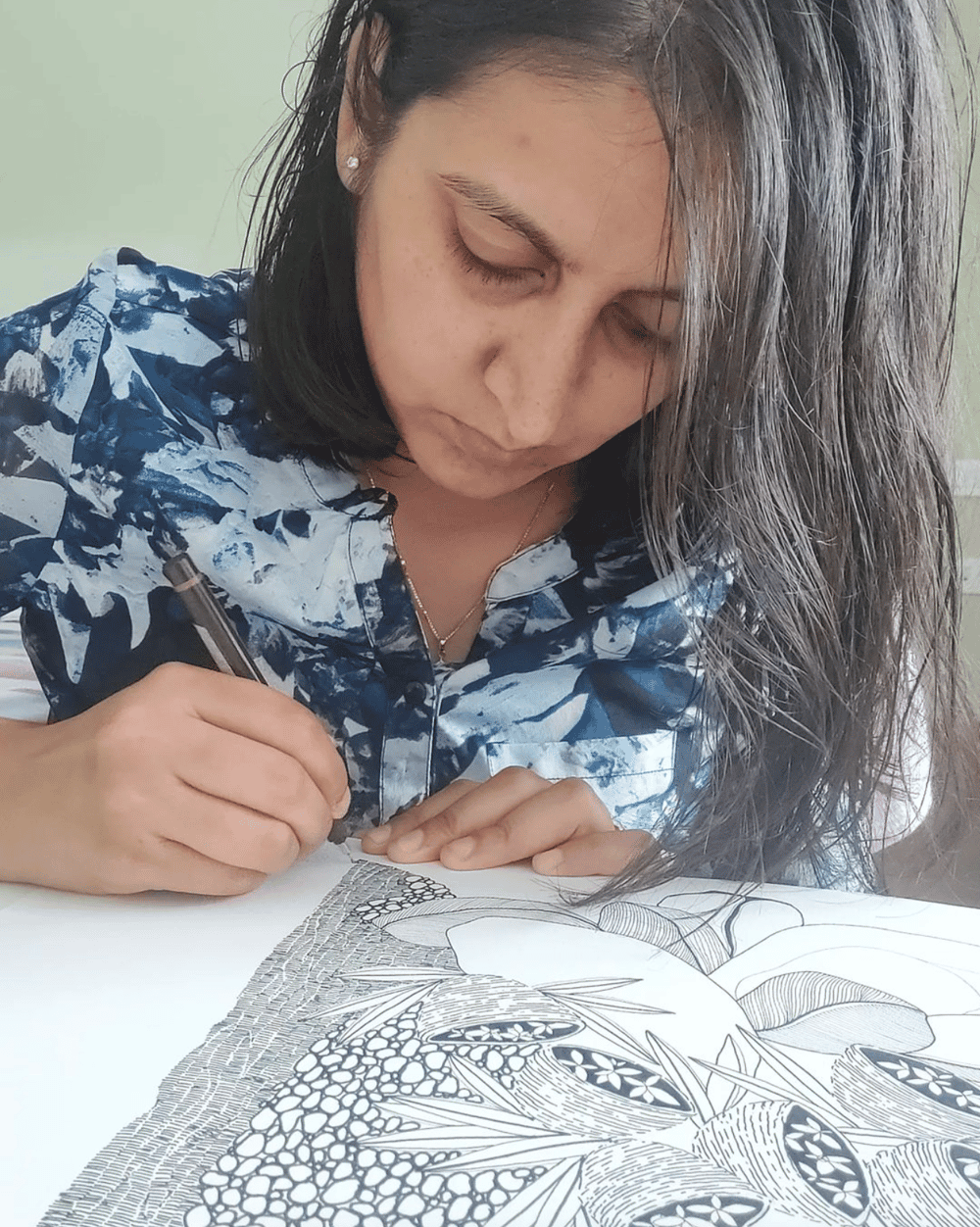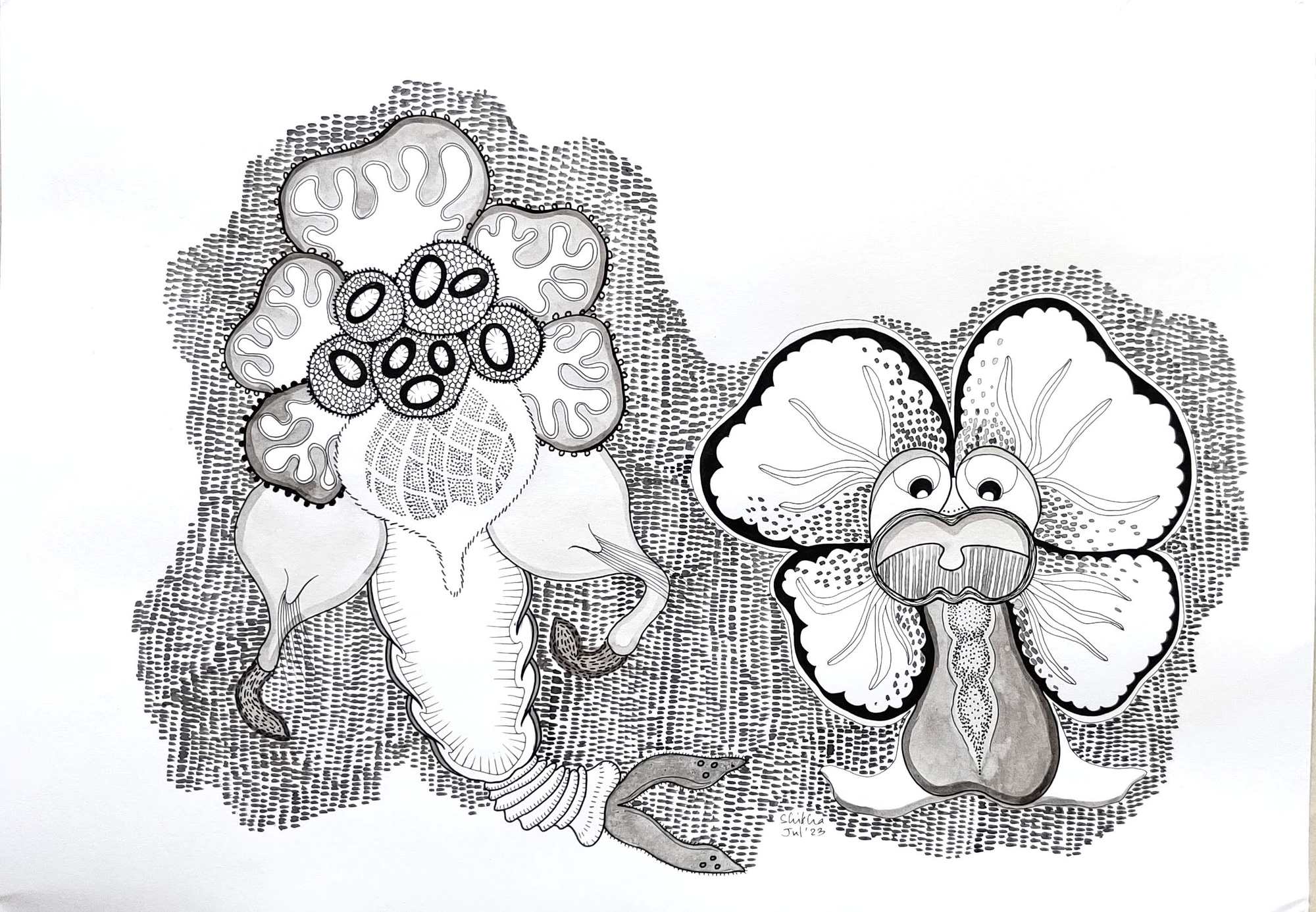#InConversation with Shikha
By Davangi Pathak | Jul 11 2024 · 20 mins
Focusing on flowers as her subject and medium of expression, Shikha deconstructs their form to uncover the primal elements of survival, reproduction, time, and hunger. Through this interaction, we will explore Shikha's practice and her journey from architect to artist.
Davangi: You pursued architecture for a few years, but after having a baby, you shifted to your artistic practice. Could you tell us about this shift and how motherhood contributed to your practice?
Shikha: I have always had a strong inclination towards art, and architecture emerged as the professional discipline most closely aligned with my artistic interests. After gaining experience in architecture and interior design, motherhood profoundly transformed me. It softened my egoistic tendencies, making me more humble and receptive. Motherhood has enriched my life, bringing greater happiness and fulfilment. I feel a deep sense of having contributed positively to nature and humanity.
Davangi: You find architecture superficial. What elements did you find superficial, and how did this realisation help you identify your true passion in art?
Shikha: I do not consider architecture, as a comprehensive discipline, to be superficial. It serves as a testament to culture, history, and economy. Architectural marvels, such as the meditation rooms in the Ajanta caves, temple designs, institutional buildings, palaces, and forts, all provide evidence of past, present, and evolving societal values. However, upon completing my theoretical education and entering the professional field, I developed a distaste for the more commercial and superficial aspects of architecture and design, particularly due to the imprudent and unrestrained use of resources. There are indeed more noble pursuits, such as earth architecture and design research, which demand a profoundly selfless dedication to effect meaningful change. At this stage, however, I am apprehensive about undertaking such a commitment. Art, much like architecture, reflects the zeitgeist of our times. Through my art, I am striving to discover my perspective on this epoch.


Shikha at her Studio, 2022


Shikha at her Studio, 2022
Davangi: In our previous conversation, you mentioned that you are still figuring out the transition of giving meaning to meaningless objects. Could you elaborate more on your experimentation with found objects?
Shikha: I have always been a hoarder, an attribute stemming from an acute awareness of the vast array of resources available to us. We often fail to recognize the diversity of materials at our disposal—paper, aluminium, iron, cotton, wood, cellulose, Styrofoam, copper, plastic, and glass, to name a few. Discarding these materials equates to discarding years of accumulated energy. To me, these materials and composites are potential components of art. Currently, I am experimenting and striving to imbue these materials with a narrative or story. My focus is to transform these ordinary materials, revealing their remarkable potential.
Davangi: Are there any artists, their methodologies, or aspects of their lives that inspire you?
Shikha: Many artists, both Indian and international, inspire me. Each has a unique perspective and the ability to transform their vision into tangible pieces of art. Artists like Bobbie Burgers and Dhruvi Acharya have taught me to appreciate the beauty of ageing, decay, and the wisdom of nature and its cycles. Others, such as Jayashri Chakraborty, El Anatsui, and Phyllida Barlow, inspire me to think boldly and see the extraordinary potential in ordinary things.
Davangi: You mentioned that delving into your psyche is scary. Could you explain why?
Shikha: Exploring the depths of the psyche is intimidating, as it can reveal unexpected truths. What if I discover aspects of myself that I dislike, or realise that my current path isn't aligned with my true desires? The process of self-discovery may become consuming, akin to a relentless pursuit. This journey may necessitate sacrificing my familial life to fully immerse myself, as only by losing myself entirely will I uncover my true artistic essence.
Davangi: You aim to create art that resonates with you rather than decorative art. How do you
differentiate your art from decorative art?
Shikha: For me, art must engage the mind as profoundly as it occupies physical space. While fundamentals such as composition and colour are vital, art must transcend mere aesthetics. It serves as a reflective surface of our existence, akin to architecture, offering tangible evidence of human presence. Art fundamentally prompts introspection, compelling us to delve deeper into the recesses of our consciousness. I believe true art transcends superficial decoration, immersing itself in the realm of reality and resonating with our innermost selves.
Davangi: You mentioned that reality has ugly layers to it. Could you explain more about this perspective?
Click here to view Shikha's Online Viewing Room and learn more about her practice.
Shikha: As I grow older, I am increasingly exposed to the various realities of society, humanity, economies, and the workings of the world. The more I understand these mechanisms, the more I find myself disillusioned with humankind. This awareness inevitably permeates my artworks, sometimes quite overtly and at other times more subtly. Each new piece of knowledge alters my tangible perception of a subject, influencing the way I create and interpret art. Despite our frequent discussions of the beauty and aesthetics of various subjects—especially nature—the underlying reality of all existence is a blatant sense of survival, which can be violent and ruthless.
Davangi: Would you like to discuss any upcoming projects? Do you plan to experiment with different mediums in your future work?
Shikha: Currently, in addition to utilising my preferred medium of ink on paper, I'm exploring various found objects, such as fallen botanical elements and packing materials, some of which are biodegradable while others are not. My aim is to create installations using these materials. However, space and time constraints pose significant challenges to this endeavour. Consequently, the process of creation often becomes an end in itself, leading to the abandonment of projects. Additionally, I have a concept for crafting sculptures from salvaged or foraged items found at construction sites, with the intention of integrating them back into the original location upon completion. This approach ensures that the artwork both originates from and becomes an intrinsic part of the same environment and site.


